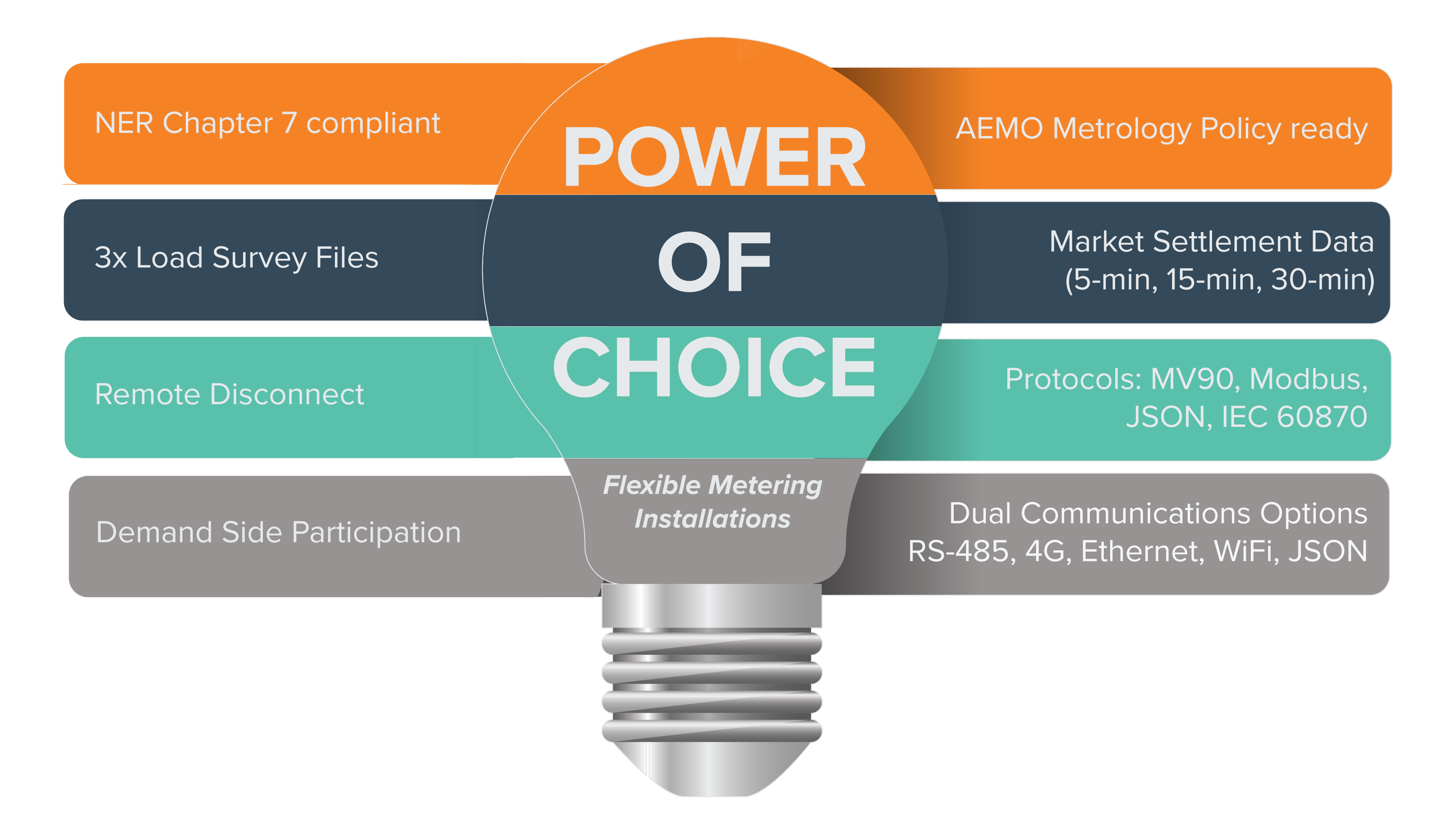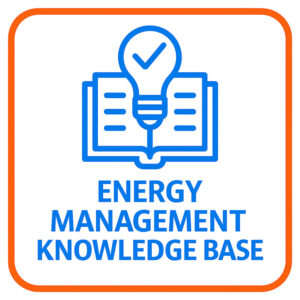SATEC introduce 1st Power of Choice compliant DIN-meter
Table of Contents
The new Power of Choice (PoC) reforms implemented within Australia work to provide benefit to consumers combined with the Australian Energy Market Commission (AEMC) expanding competition in metering and related services review.
Power of Choice metering provides consumer choice when appointing an electricity retailer for their supply of electricity. It effectively works to provide enhanced competition in electricity metering within the National Electricity Market, known as the NEM.
Power of Choice streamlines the electricity metering replacement process by giving electricity retailers oversight of the appointment of meter installers and organisations that facilitate meter data services.
Power of Choice metering facilitates enhanced services and improves pricing signals such that electrical metering systems support advanced services such as: detailed consumption data, electric vehicle charging during off peak hours, demand side participation to allow remote control of price-sensitive appliances, on and off grid operations of Solar PV and battery storage, and much more…

The Power of Choice reforms fundamentally provide the ability for any consumer to purchase electricity from any electricity retailer within Australia. This change particularly provides benefits to Embedded Networks since many of the current technical and legal limitations of metering installations prohibit flexible installation methods.
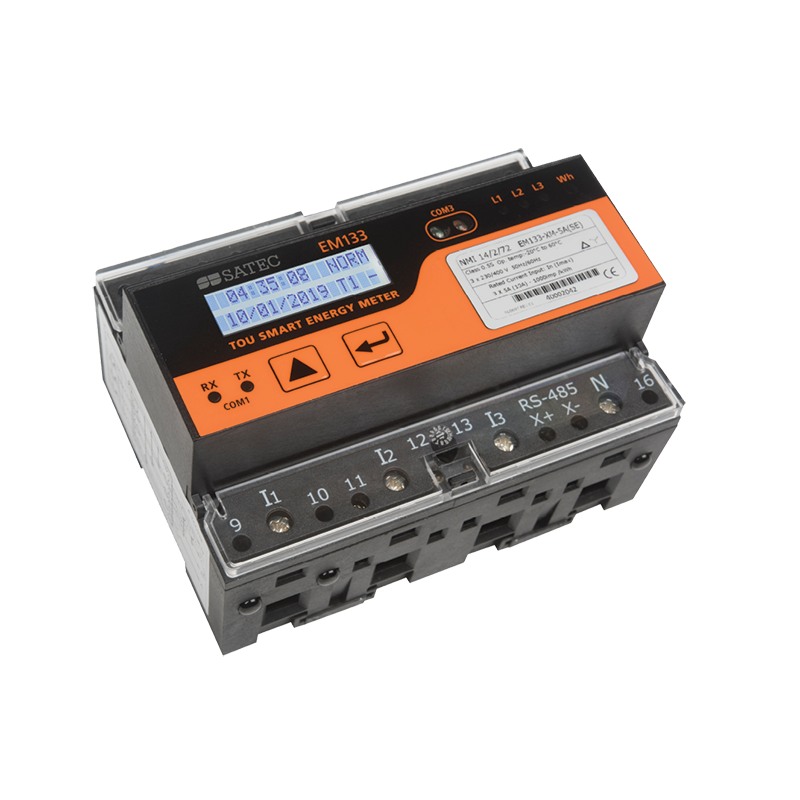
SATEC’s eXpertMeter™ EM133-XM has been designed and tested for use in the new Power of Choice framework in Australia.
Power of Choice metering is reliant on the Minimum Services Specification following a report by AEMO and Council of Australian Governments (COAG) detailed as the Minimum Functionality of Advanced Meters.
The eXpertMeter EM133-XM complies with the National Electricity Rules (NER) and AEMO Metrology Policies. The EM133-XM exceeds the Minimum Services Specification and significantly changed the game by allowing more flexibility in new metering installations and retro-fit replacement of older electro-mechanical metering.
SATEC innovations provide electricity retailers, Meter Coordinators, Meter Providers and Meter Data Providers expanded flexibility for metering installations compared to the current challenges with existing designs.
SATEC innovations provide developers and asset managers with improved Return on Investments and ultimately leverages higher Return on Asset values. We achieve this by giving developers and owners installation space back.
Previous wasted space with old designs and larger style metering installations is no more!
There is a broad range of testing requirements for electricity energy meters. This is both complex and involves a lengthy testing procedure to ensure certified compliance. Investment for any technology provider to achieve these outcomes is significant.
Electricity meters used for billing, known as “Trade Measurement”, requires testing and approval to standards governed by the National Measurement Institute (NMI) in Australia. NMI requires all electricity meters used for Trade Measurement (Billing) to have a Pattern Approval known as NMI M6-1.
An NMI Pattern Approval under NMI M6-1 is not enough to comply with “Power of Choice Metering” for both on-market and off-market needs. A large gap in capabilities in Embedded Network off-market systems exists today. For electricity billing, metering installations may require more advanced metering capabilities for future proofing when it comes to Power of Choice.
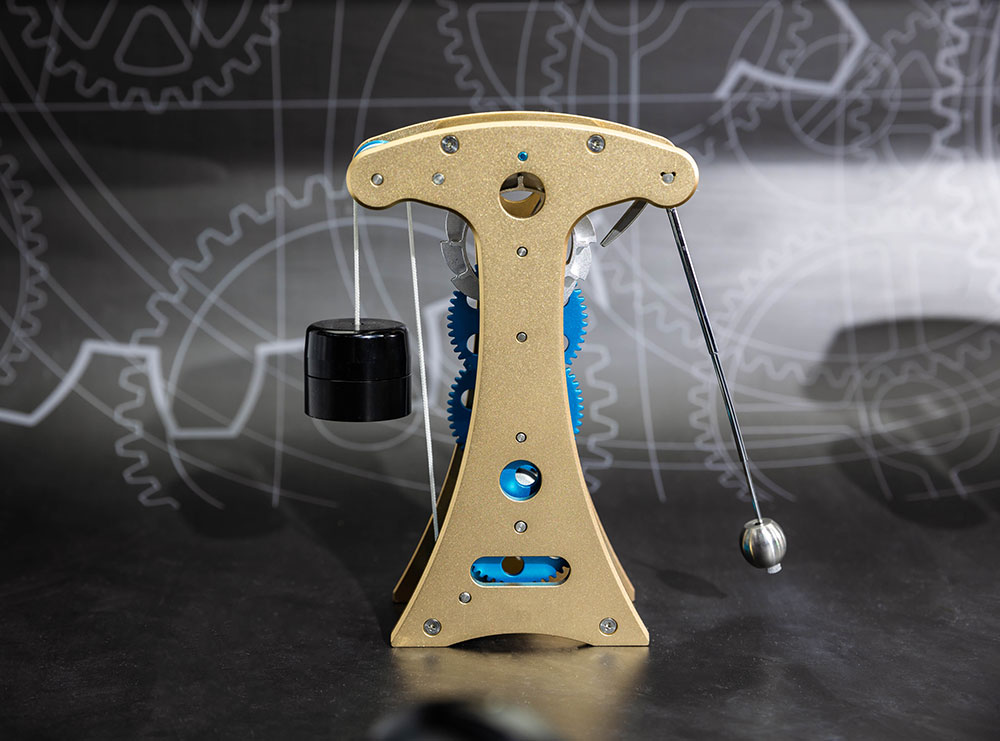
SATEC’s NMI approved electricity meter per NMI M6-1 provides high accuracy measurement for energy with Accuracy Class 0.5S according to AS/IEC 62053-22.
The SATEC eXpertMeter™ EM133-XM-100A is the most accurate meter offered on the Australian Market for whole current, or direct current measurements up to 100A with Class 0.5S Active Energy (kWh) Accuracy.
Not all smart meters are the same. Many do not even have the ability to perform data logging which is a legal requirement for on-market systems. Data logging in metering is known as Interval Data or Load Survey Files, otherwise referenced as Market Settlements Data. AEMO also refers to this data as NEM Daily Energy Summary File.
Market Settlements Data in Australia is portrayed in various formats, such as NEM12 data format for instance. Predominantly 30-minutes, but 15-minutes is also utilised. The AEMC and AEMO are working towards implementing the 5-Minute Settlement Rule change.

The new 5-Minute Settlement conditions would enable spot pricing in the market to support modern technologies such as battery systems for faster dispatch of energy when required to support the electricity grid operation.
The SATEC eXpertMeter EM133-XM incorporates industry leading capabilities including 8MB on-board EEPROM memory. This 8MB of memory is ready for the 5-Minute Settlements new market conditions when they are finally adopted and implemented in the electricity market.
Further to this, three (3) Load Survey Files are provided within the EM133-XM. This enables the meter to be utilised for up to three (3) consumer services with clear segregated data for use by Meter Data Providers when sending data to electricity retailers.
For example, an individual dwelling with one (1) electricity meter for consumer mains, a second electricity meter for solar production, and a third meter for solar consumption now reaps the benefit of the eXpertMeter EM133-XM combination in a single meter for all functions! A traditional installation requires two (2) to three (3) individual meters. Refer to the image below.
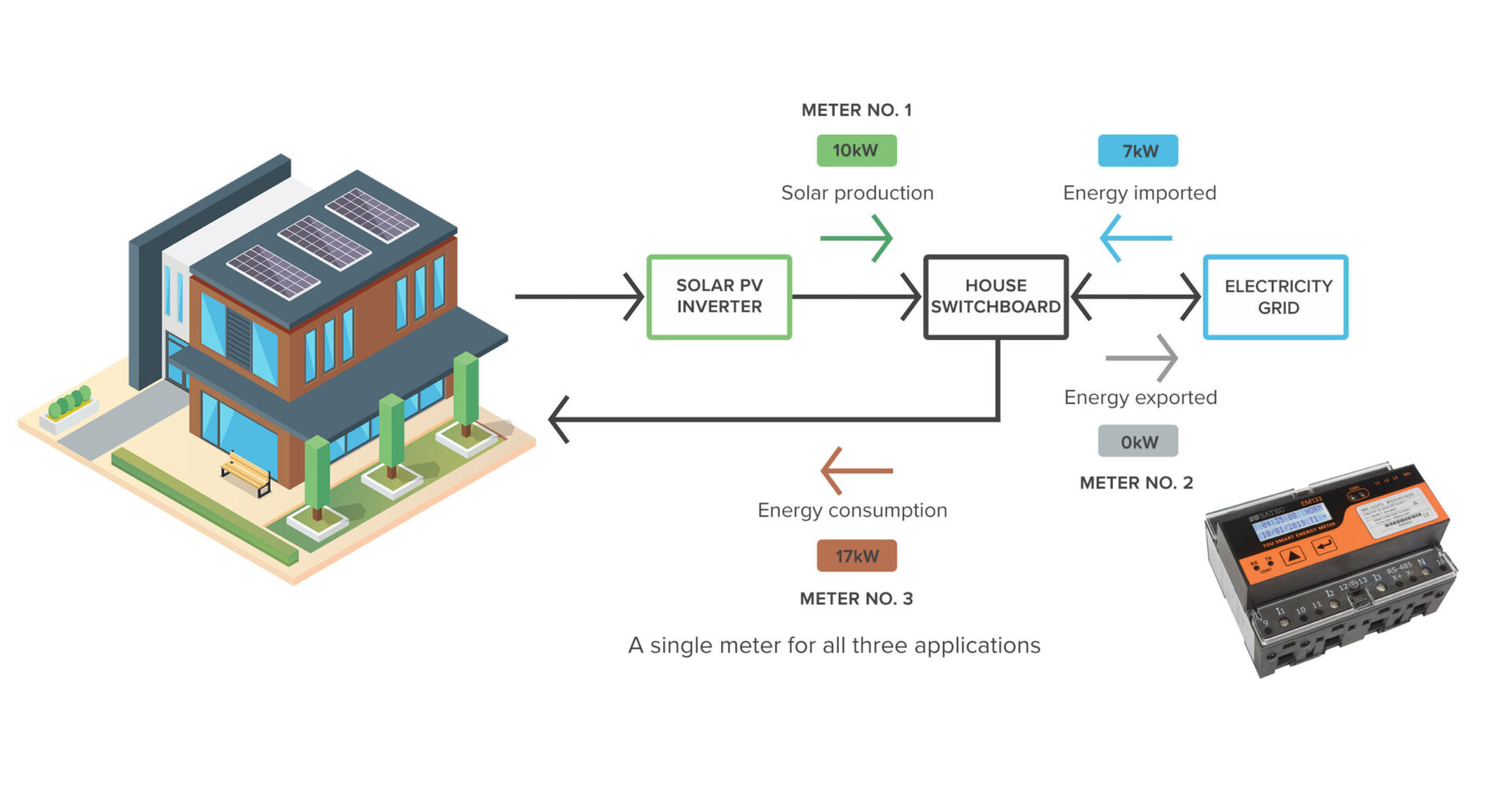
Interval data on the eXpertMeter family of products is user programmable for 1, 2, 3, 4, 5, 10, 15, 20, 30, or 60 minutes. This unique feature provides immense flexibility in the configuration of each interval trading period to represent NEM data or power quality logs for example.
Date/time stamping is provided for each data log record. With three (3) interval data logs provided within the EM133-XM eXpertMeter, each data log is independent of each other such that each data log can be programmed with different interval date/time stamping needs.
Examples of different configurations of SATEC Data Logs (Load Survey Files):
- Data Log 1 configured at 1-minute logging – e.g. Power Quality logging
- Data Log 2 configured at 5-minute logging – e.g. 5-Minute Settlement
- Data Log 3 configured at 30-minute logging – e.g. NEM12 format
The interval data logs can each record up to sixteen (16) electrical parameters, providing a total of forty-eight (48) date/time stamped electrical recorded metering data; as a data logger the EM133-XM family is one powerful electricity meter.
Not only does the eXpertMeter have the ability to record and store energy data, but also the meter has comprehensive power quality information such as harmonics, voltage interruptions, voltage sag/swell, power factor, over-current or under-current conditions. More detail on this information is provided below in the Power Quality Features section.
When it comes to load control, there are many aspects to consider. Some relate to hot water metering whereby the technique to turn on and off an electric hot water heater can reduce electricity consumption, in turn reducing electricity bills.
Demand Response is a technique where loads can be controlled, turned on or off, based on a specific energy need – e.g. electrical system is overloaded, electrical system is underloaded, pricing signals dictate a need to reduce maximum load to reduce electricity bills….and much more.
Remote Disconnect is a term used when considering Power of Choice reform as per the Minimum Services Specification. Often it refers to the “Remote Energisation” or “Remote De-Energisation” of a consumer’s electricity mains power supply. It is the electricity meter, or ancillary device that can turn on or off electricity power supply to a tenants service.
Demand Side Participation is the ability for a consumer to opt in to a service with their respective utility in order to allow price sensitive electrical appliances to be turned on or off, based on the agreement or service provided by a service provider.

SATEC electricity meters not only provide ability for Remote Disconnect service, but they also provide ability for Demand Response, Controlled Loads and Demand Side Participation, and more!
Most electricity meters provide just one (1) option for a Remote Disconnect, whereby SATEC’s eXpertMeter EM133-XM family provides up to five (5) electrical circuits for controlled loads. This flexibility gives more power to service providers and ultimately consumers.
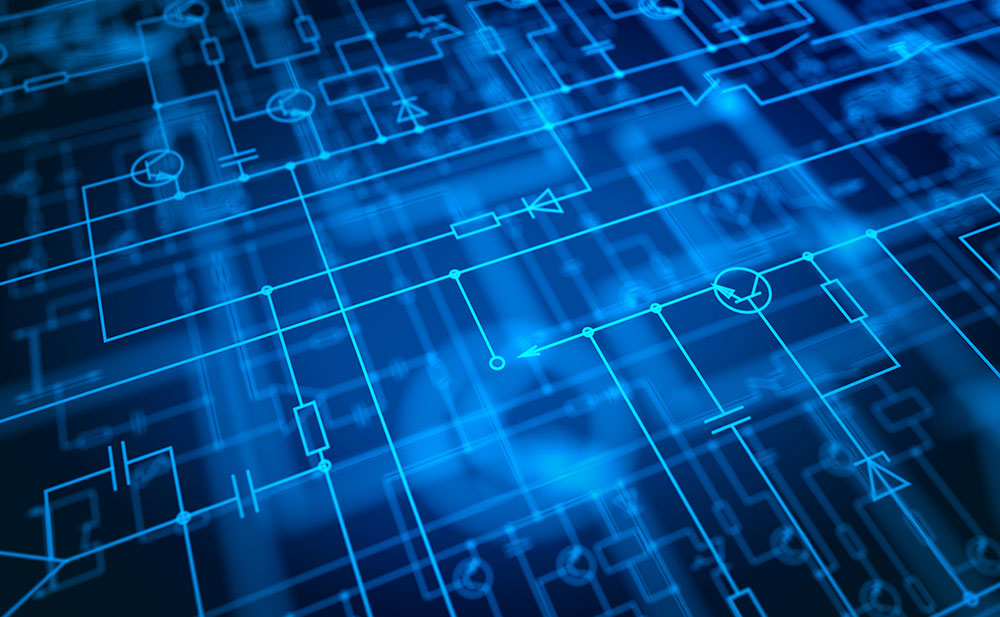
SATEC has both, whole current and CT metering solutions in Class 0.5S Accuracy ratings based on AS/IEC 62053-22 standards for accuracy of Active Energy, known as Watt Hours (Wh). Consumers are invoiced for kilo-watt-hours (kWh), or one-thousand (1,000) watt-hours (1 kWh).
The Power of Choice compliant whole current electricity meter, EM133-XM-100A, offers support for loads up to 100-Amps direct connect.
The Power of Choice compliant CT electricity meter, EM133-XM-5A, provides a 5-Amp CT input.
Furthermore, the CT input is rated at 5/10-Amps, allowing use of extended range CTs, which is common in utility installations to improve accuracy in metrology readings.
Extended range current transformers (CT’s) allow utilities to standardise on fewer ratios and reduce the number of different types of CTs they require with their inventory, providing cost savings.
Accuracy is key to correct and transparent electricity metering and billing systems.
Not all manufacturers provide such accurate metering in a compact package.
SATEC is an industry innovator and is changing the game – There is a Difference!
Communications are generally a challenging framework to support with low cost metering hardware. Most meters have only a single communication path, where others such as SATEC, can support multiple communication media allowing for more advanced communication.
Most low cost meters have a single RS-232 port with 1:1 communication topology limitations. Each meter would generally have a modem connected to the RS-232 port of the meter to allow for remote communications. This sometimes limits communication baud rates to 9600 bits-per-second, which is very slow when comparing to Ethernet at 100,000,000 bits-per-second or greater.

SATEC’s eXpertMeter EM133-XM provides a standard RS-485 port that supports multidrop communication networks with a maximum baud rate of 115,000 bits-per-second. Additionally, an Infra-Red (IR) port is provided as standard on-board the metering hardware. Expanded communications are available such as Ethernet (TCP/IP), CAT-6 or WiFi option, as well as additional RS-232/RS-485 ports or Modem (4G) connectivity.
The EM133-XM eXpertMeter provides communication protocol support for:

Through SATEC’s eXpertPower Software as a Service (SaaS), a RESTful Application Programming Interface (API) is available with use of JavaScript Object Notation (JSON).
JSON is an object oriented programming language commonly understood by modern day programmers. Compared to other communication protocols, JSON uses today’s web based techniques that reduces restrictions in connectivity between systems such as Enterprise Resource Planning (ERP) systems and accounting software commonly used by larger organisations.
Many limitations exist in today’s so-called advanced metering installations. So-called smart metering today even has communication bandwidth limitations such as 9600 bits-per-second baud rates and 1:1 communication paths restricting shared data. This restriction of shared data forces multiple meters to be installed, instead of using a single meter for multiple services and tasks. This is a fact many providers will not discuss with you!
To simply state that industrial communication protocols do not support Market Settlements Data and ultimately the NEM, would be mis-informed. The key to supporting national grids is through openness in communications to better leverage enhanced services generally restricted with various metering installations.
Modbus protocol is an industry traditional communication protocol used for interface with Building Management Systems (BMS) or Supervisory Control and Data Acquisition (SCADA) systems. BMS and SCADA are used commonly in commercial buildings, shopping centres, industrial facilities, data centres or even through the electricity grid for example. Various other communication protocols are used such as DNP 3.0, IEC 60870, MV-90, IEC 61850 and many more.
SATEC meters incorporate a Programmable Logic Controller (PLC) within the electricity meter. The PLC allows for the “truly” smart-meter to be programmed to operate independently of traditional control systems, or in combination with them.
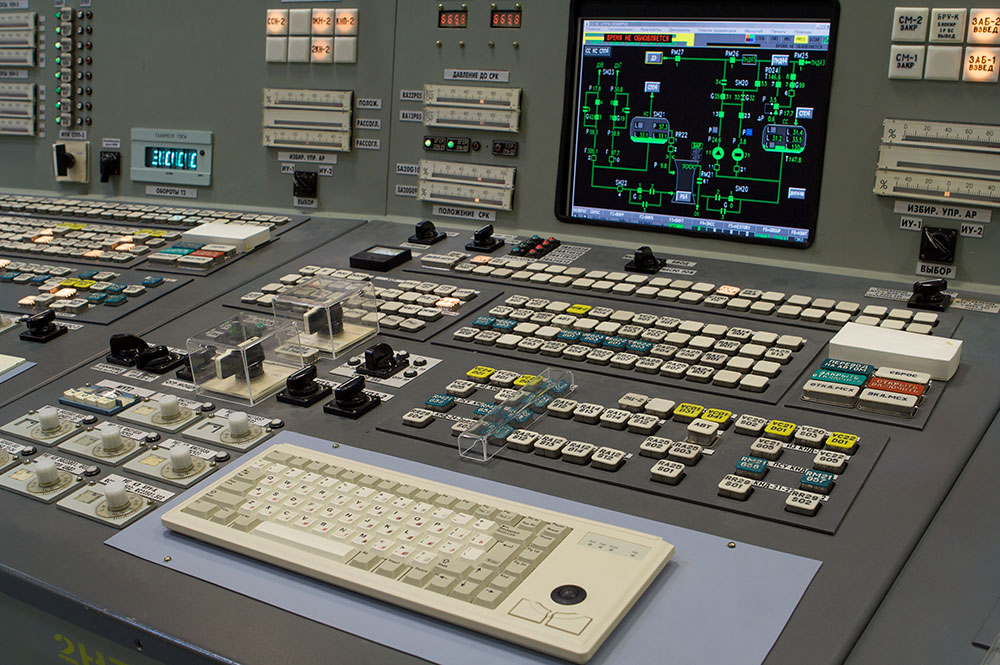
The PLC gives true Power of Choice when it comes to Demand Response, Demand Side Participation and Pricing Signals in the NEM when implemented effectively.
Another difference of SATEC meters, is that the meter updates the registers every sinusoidal waveform – e.g. 1-cycle (20-milli-seconds @ 50hz). Most meters only update their register every 1-second. SATEC provides both 1-cycle and 1-second integrated average values. This becomes important particularly in Virtual Power Plants or Renewable Energy Load Balancing, due to the time required for control systems to balance loads such as a cloud coverage stopping solar generation.
Furthermore, SATEC provides advanced techniques mostly dedicated to PLC or Protection Class Relays, where groups of data can be consolidated into a single block of data to perform a “Block Transfer” of register data in a single request. Traditionally control systems would need to request data many times. By use of SATEC Assignable Register, up to one-hundred and twenty (120) registers are available in a single request of data. This makes communication throughput more efficient and effective. It’s those one-percent (1%) extras that matter in large systems!
SATEC eXpertMeter EM133-XM supports hundreds and hundreds of points of data!
The eXpertMeter family provides Power Quality data inclusive of voltage and current harmonics, Total Demand Distortion, sag/swells, voltage interruptions, over and undercurrent, power factor, current unbalance, phase reversal and much more.
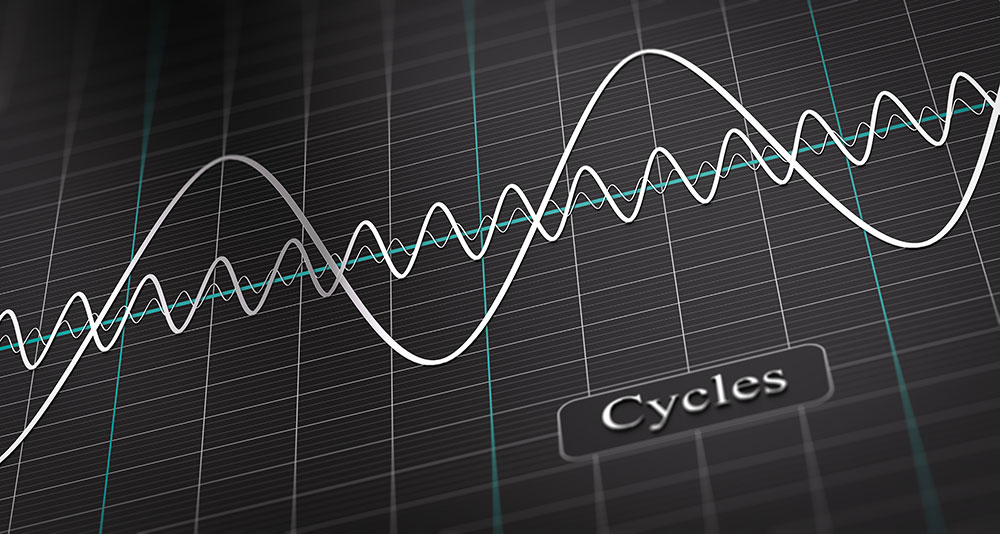
The eXpertMeter is not simply a basic energy meter for revenue billing, it satisfies the data hungry solar analytic platforms by being able to monitor individual harmonic fundamentals over time to see degradation of Insulated Gate Bipolar Transistors (IGBT), otherwise known as inverters. Other critical industries such as Wind Farms or Data Centres also have a need to monitor, measure and trend power quality data such as harmonic distortion or electrical power factor within systems.
The individual Data Logs within the eXpertMeter allow for setup of advanced monitoring of power quality events, voltage interruptions, power factor conditions or overcurrent in electrical systems. These are just a few examples of what an eXpertMeter can achieve based on the in-built embedded controller programming interface.
Voltage, Current, Power Factor, Active Power, Apparent Power and Reactive Power, and others, are also given the ability to provide Max Demand, Min/Max data and also Integrated Average Profiles based on setup of the Power Demand Periods within the configuration of each meter.
Various systems utilise pulse metering for resource generation or consumption data. These systems provide an electronic pulse to other software systems to monitor ongoing trending of resource profiling.
Many water and gas metering utilise pulse outputs today in order to interface with billing platforms, Building Management Systems (BMS) and/or Supervisory Control and Data Acquisition (SCADA) systems.
Even Solar PV generation sometimes uses pulse outputs to provide indication of the generation of electricity.
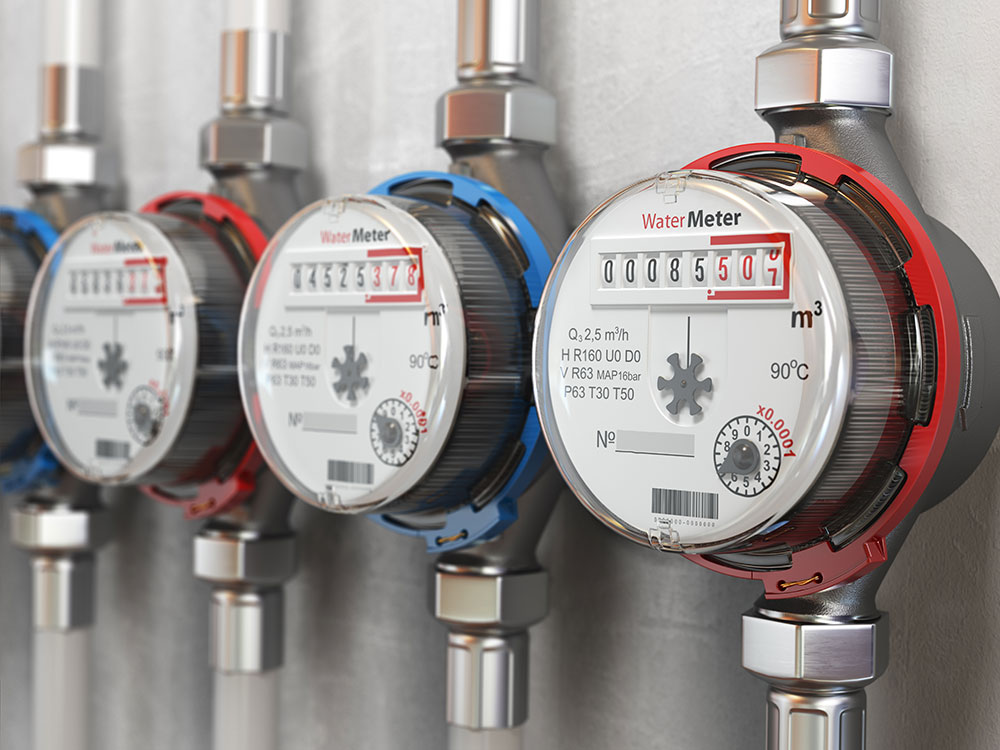
Air conditioning proportioning systems also can use pulse outputs to give indication of electrical consumption to tenants for use in billing systems.
Pulse input capability is standard on the EM133-XM providing two (2) pulse inputs for water and/or gas pulse inputs, or other services. Furthermore, expanded module capabilities allow additional pulse inputs for up to six (6), ten (10), fourteen (14) pulse inputs from SATEC’s eXpertModules.
Smart electricity energy meters require control and communication interfaces for billing, load management and power quality to ensure reliable energy measurement and reporting is provided. Smart metering requires advanced setup and configuration as well as ongoing asset monitoring and management of the metering infrastructure and overall metering installation.
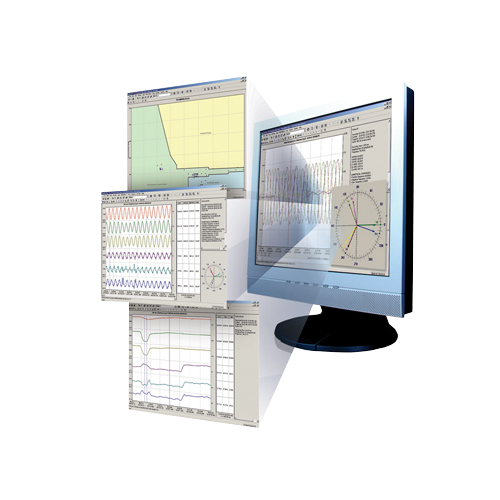
Power Analysis Software (PAS) from SATEC is a complete Asset Management tool for users to interface with the full suite of SATEC hardware. PAS provides ability for configuration, programming, monitoring, diagnostics and forensic analysis, data extraction, data storage and much, much more.
An in-built oscilloscope is provided within PAS to give users and metering providers the ability to perform real-time Waveform & Vector Capture, thus providing certainty and assurance in the metering wiring integrity.
This technique of using a Waveform & Vector Capture is equal to Phase Rotation verification tests and giving insight to misalignment of phase relationships and incorrectly wired meters – e.g. exporting energy instead of importing or vice versa…
PAS also includes an automated Scheduler that is able to retrieve ongoing Interval Data files, Power Quality log files and other data such as Asset Event Logs for change management history.
These data files can be extracted and stored on a local or network drive for analysis at a later time in various data formats such as – Microsoft Database / Access (.mdb), Comma Separated Value (.csv) or Microsoft Excel (.xls). The Scheduler within PAS can automatically update the real-time-clock within the SATEC metering hardware.
Simply put – PAS is a comprehensive Asset Management tool and Meter Verifier in one!
Oh, and it is FREE !!

SATEC also provides enterprise software solutions for billing, data analysis, load management as well as advanced Power Quality Metering with our eXpertPower platform.
eXpertPower in the Cloud, gives organisations more focus on their operations and allows SATEC to provide our expertise to leverage advanced metering solutions. Cloud services can lower operational costs, improve efficiencies and limit training requirements for staff using standard web browsers as the interface across the enterprise such as Google Chrome, Mozilla Firefox, Microsoft Edge, etc.
eXpertPower can give insights through Dashboards, Heatmaps, Geo-Graphic Location (Google Maps) or Custom Designed user interfaces as required.
Each user can be provided with individually tailored permission sets in order to give basic access to some users and advanced access to others. The analytics provided is based on significant data acquisition and storage allowing for detailed analysis where necessary.
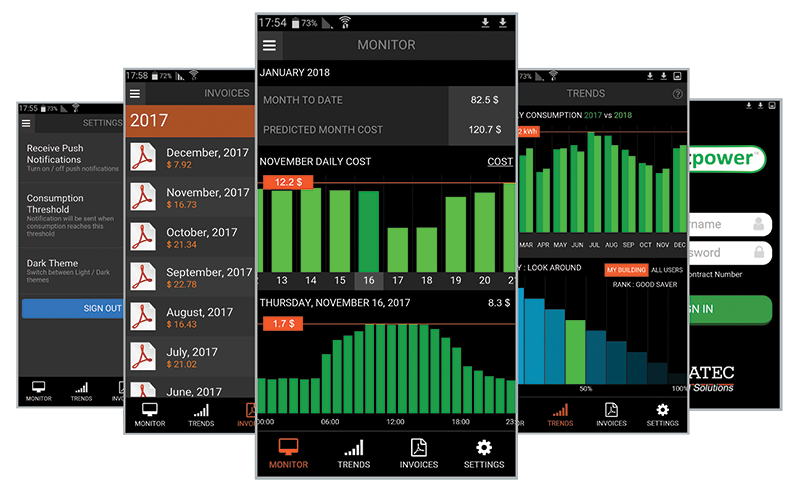
Reports in eXpertPower can provide ongoing invoices for billing system, usage data or power quality information, as well as many others, through manual user generation, automatic email or automatic publishing to File Transfer Protocol (FTP) or Secure File Transfer Protocol (SFTP) servers as required.
SATEC also provides a user installer, Enterprise Version, for installation on a corporate server in a data centre of your choice. This version is available for large utility companies, corporate enterprise and strategic customers globally.

SATEC provides additional Professional Services including data validation, programming and commissioning of metering systems to ensure correct data is being generated and received and customers are receiving correct and validated electricity bills.
SATEC Professional Services has been utilised on leading infrastructure projects in Australia in Data Centres, Airports, Shopping Centres, Hospitals, Universities, Apartment Buildings, Commercial Offices and Industrial Manufacturing Facilities.
Further to this, many Solar PV and niche industries rely on SATEC expert guidance with staff trained and experienced with a multitude of technology such as: Electrical Wiring, Advanced Metering, Communications, Power Quality, PLC, SCADA, BMS and much more.
SATEC provides industry leading 5-Years Warranty with backup of 5-Years Accuracy Guarantee through our AccuMeasure quality assurance program. The AccuMeasure program is backed by our ISO 9001 systems and ISO 17025 certified laboratory for calibrations in accordance with international metrology accuracy standards.
ISO 17025 is key to NMI’s strategy in assurance to Australian consumers that electricity metering is not only accurate in its measurements, but also provides repeatability in metrology readings through continual supply.
NMI mandates National Instrument Test Procedures for Utility Meters, known as NITP-14, whereby the Australian consumer is protected from inconsistencies in quality and reliability of accuracy in electricity metering measurement.
The ISO 17025 certification of SATEC’s testing facility ensures that the highest level of testing, validation processes and traceability are in place. This ensures customers confidence with SATEC metering products through reliability with repeatability and reproducibility capabilities.
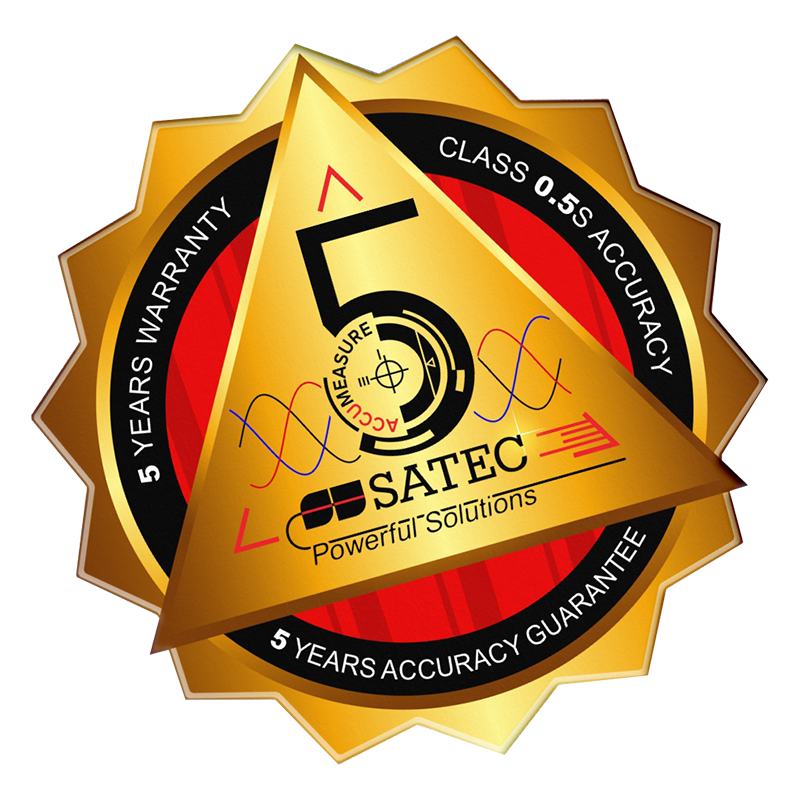
*Modbus™ is a registered trademark of Schneider Electric.
*MV-90 is a communication protocol of Itron.

